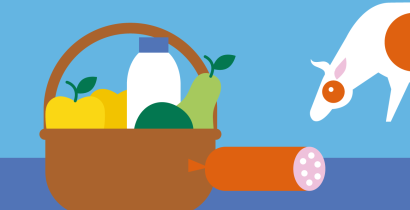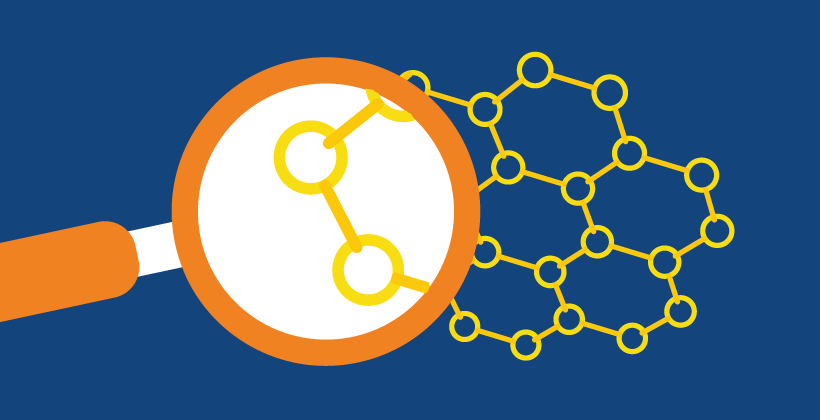Genetically modified food: What do you need to know?
Last Updated : 29 February 2016For thousands of years, crops and livestock with desirable characteristics have been grown and bred by humans. Changes in genetic make-up occur naturally between generations of plants and animals, and through selective breeding, resulting in the selection of traits favourable to our supply. Recently, technology has allowed us to genetically modify our food faster, but is it safe and how is this regulated?
What are GMOs?
Scientists are now able to identify and influence genes responsible for specific physical and metabolic traits.1 The process of transferring genes within or across species is called ‘genetic modification’. A ‘genetically modified organism’ (GMO) may be a plant, an animal, or a microorganism whose genetic make-up has been modified using biotechnology.
The first generation of GMOs were crops designed to have improved agronomic traits that were mainly of benefit to the farmer, such as increased resistance to herbicides, insects, disease or drought.2 Second generation GM crops have delivered more tangible benefits for consumers, such as improved food quality and increased nutrient bioavailability.3
GM crops represent a valuable means to address socio-economic challenges in an ever-changing world of growing global populations, climate change and, possibly, future food shortages. Micronutrient deficiency, for example, remains a significant public health issue, for which biofortified GM crops may provide part of the solution - particularly in malnourished populations.3
How are GMOs regulated?
In the EU, GM food and feed are defined as those that contain, consist of, or are produced from GMOs.4,5
Under EU law, all GMOs must be authorised before they can be cultivated or used as food or feed.5 A rigorous safety assessment is performed by the European Food Safety Authority (EFSA). The data required for the assessment includes data to demonstrate the product’s safety and risk assessments for humans, animals and the environment. The EFSA assessment is reviewed and voted on by a committee of experts from each EU Member State. After 10 years, the authorization can be renewed after taking into account any newly available data.5
GMOs are among the most scrutinized food groups in the EU and consumers can be assured that the safety assessment is adequate and approved GMOs are as safe as their conventional counterparts. If evidence of a possible risk to humans, animals or the environment was ever to emerge, measures are in place to rapidly withdraw any implicated product and suspend/modify its authorisation.5,6 To date, no adverse effects on human health have been observed as a result of consumption of authorised GMO foods.7
Labeling and Traceability of GMOs
A label mentioning the GM origin is required if more than 0.9% of a food, or ingredient, is derived from an authorised GM source. Below this threshold operators must be able to supply evidence that the presence of any GMO is unintentional or technically unavoidable.5 ‘GM-free’ labels can be used voluntarily – as long as they do not mislead the consumer. A label must not claim that a food product possesses special characteristics when all similar foodstuffs possess such characteristics.1 For example, it is misleading to label orange juice as GMO-free, since there are currently no GM oranges on the market anywhere.
GMOs, and any products containing them, are labelled and their origins are traceable throughout the food supply chain.5,8 Moreover, everyone involved in the supply chain must keep records of all transactions of GM food/feed over a five year period; this ensures that products could be tracked if evidence of an unexpected risk was ever to emerge.8,9 The European Commission has established an online public register where citizens can search for information on authorized GMOs.10
What is currently authorized in the EU?
There is one GM crop that is currently approved for cultivation, insect-resistant maize. It is currently grown in small quantities in Spain, the Czech Republic, Portugal, Romania and Slovakia.11 Legislation passed in 2015 allows individual member states to restrict or ban cultivation of EU-approved GM crops in their own territories.12,13
As of January 1st 2016, there were 61 GMOs authorised for marketing as food or feed in the EU. These GMOs are not cultivated on EU territory, but food and feed can contain them from imported sources.14
They include:
- 32 maize varieties
- 12 soya varieties
- 10 cotton seed varieties
- 4 oilseed rape varieties
- 1 sugar beet variety
- 1 bacterial product
- 1 yeast product
Looking to the future
GM food faces many challenges in the coming decades, the most important of which is public acceptance. While EU citizens should have the right to choose between GM and non-GM products, they should also be aware of the stringent safety assessments that GMOs receive prior to authorisation that ensure they are equally safe as their non-GM counterparts.5
References
- Food Safety Authority of Ireland (2013). Genetically Modified Foods.
- Klümper W & Qaim M (2014). A Meta-Analysis of the Impacts of Genetically Modified Crops. PLoS ONE 9(11): e111629.
- De Steur H, et al. (2015). Status and market potential of transgenic biofortified crops. Nature Biotechnology 33(1):25-29.
- European Commission (2015). Genetically Modified Organisms.
- Regulation (EC) No 1829/2003 of the European Parliament and of the Council of 22 September 2003 on genetically modified food and feed.
- Regulation (EC) No 178/2002 of the European Parliament and of the Council of 28 January 2002 laying down the general principles and requirements of food law, establishing the European Food Safety Authority and laying down procedures in matters of food safety.
- Nicolia A, et al. (2014) An overview of the last 10 years of genetically engineered crop safety research. Critical Reviews in Biotechnology 34(1):77-88.
- Regulation (EC) No 1830/2003 of the European Parliament and of the Council of 22 September 2003 concerning the traceability and labelling of genetically modified organisms and the traceability of food and feed products produced from genetically modified organisms and amending Directive 2001/18/EC.
- European Commission (2015). Traceability and Labelling Section.
- European Commission (2015). EU Register of Authorised GMOs Section.
- International Service for the Acquisition of Agri-biotech Applications (2014). Report on Global Status of Biotech/GM Crops Section.
- European Parliament (2015). Press release – Environment Section. Parliament backs GMO opt-out for EU member states.
- Directive (EU) 2015/412 of the European Parliament and of the Council of 11 March 2015 amending Directive 2001/18/EC as regards the possibility for the Member States to restrict or prohibit the cultivation of genetically modified organisms (GMOs) in their territory.
- European Commission (2015). Presentation: GMOs: Commission's proposal on Food / Feed.


